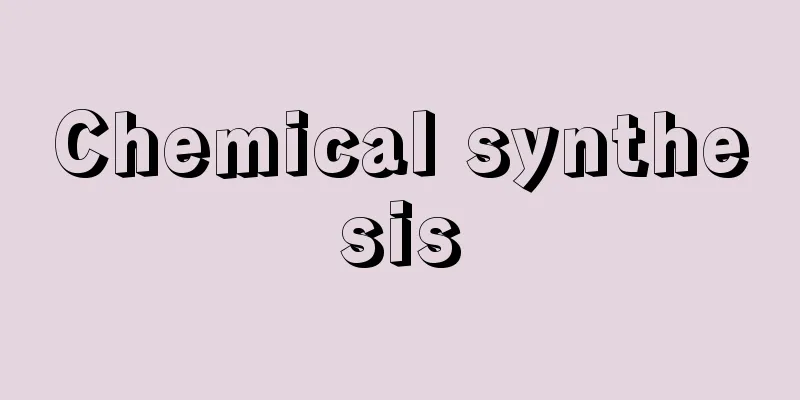Chemical synthesis

|
In chemistry, chemical synthesis, or simply synthesis, refers to the chemical bonding of substances, as opposed to biosynthesis, which occurs in living organisms. However, in biology, chemical synthesis refers to bacteria oxidizing ammonia, hydrogen sulfide, sulfur, hydrogen gas, and ferrous ions to obtain energy, which they then use to fix carbon dioxide (carbon assimilation) and perform other assimilation reactions. Chemoautotrophic bacteria include chemoautotrophic bacteria that grow only on inorganic salts and carbon dioxide, and facultative chemoautotrophic bacteria that can also use organic matter under certain conditions. They are characterized by consuming large amounts of oxygen when oxidizing inorganic matter. Known chemosynthetic bacteria include iron bacteria, nitrifying bacteria, sulfur bacteria, and hydrogen bacteria. Nitrifying bacteria, which are typical chemosynthetic bacteria, consist of two species: nitrite bacteria and nitrate bacteria. Ammonia in the soil is first oxidized to nitrite by nitrite bacteria, and this nitrite is then oxidized to nitrate by nitrate bacteria. Therefore, most of the applied ammonia fertilizer is converted to nitrate by nitrifying bacteria, and plants absorb it in the nitrate form. Carbon dioxide assimilation by chemosynthetic bacteria is said to be mainly via the reductive pentose phosphate cycle (Calvin-Benson cycle), which is the carbon dioxide assimilation pathway in green plants. The proportion of carbon dioxide assimilation via chemosynthesis on Earth is unclear, but it is estimated to be significantly smaller than that via photosynthesis. [Seiichi Yoshida and Takao Minamikawa] "New Developments in Natural Product Chemistry - Its Concepts and Approaches," edited by Isobe Minoru et al. (1988, Kagaku Dojin)" ▽ "Microbiology, Vol. 2, by R.Y. Stanier et al., translated by Takahashi Hajime (1989, Baifukan)" ▽ "Chemical Synthesis of Bioactive Natural Products - How to Make Biofunctional Molecules," by Mori Kenji (1995, Shokabo)" ▽ "Asakura Plant Physiology Lecture Series 2: Metabolism," edited by Yamatani Tomoyuki (2000, Asakura Shoten)" ▽ "An Invitation to Microbiology," by Yamanaka Takeo (2001, Baifukan)" ▽ "Asakura Plant Physiology Lecture Series 3: Photosynthesis," edited by Sato Kimiyuki (2002, Asakura Shoten)" [References] | | | | | | | | | | |Source: Shogakukan Encyclopedia Nipponica About Encyclopedia Nipponica Information | Legend |
|
化学では、生体内で行われる生合成に対して、物質を化学的に結合させることを化学合成、あるいは単に合成という。しかし、生物学で化学合成という場合は、細菌がアンモニア、硫化水素、硫黄(いおう)、水素ガス、二価鉄イオンなどを酸化してエネルギーを獲得し、それによって炭酸固定(炭酸同化)その他の同化反応を行うことをいう。 化学合成を行う細菌には、無機塩と二酸化炭素のみで生育する化学独立栄養細菌と、条件によっては有機物も利用できる任意化学独立栄養細菌とがある。無機物の酸化の際に大量の酸素を消費することが特徴である。化学合成細菌として鉄細菌、硝化細菌、硫黄細菌、水素細菌などが知られている。典型的な化学合成細菌である硝化細菌は、亜硝酸菌と硝酸菌の2種よりなり、地中のアンモニアは、まず亜硝酸菌によって亜硝酸に酸化され、この亜硝酸が硝酸菌によって硝酸に酸化されるので、施肥されたアンモニア肥料の大部分は硝化細菌によって硝酸となり、植物は硝酸態で吸収することになる。 化学合成細菌の炭酸同化はおもに緑色植物の炭酸同化経路である還元的ペントースリン酸回路(カルビン‐ベンソン回路)によるといわれている。地球上での化学合成による炭酸同化の比率は明らかでないが、光合成に比べてかなり小さいと推定される。 [吉田精一・南川隆雄] 『磯部稔ほか編『天然物化学の新しい展開――その考え方と進め方』(1988・化学同人)』▽『R・Y・スタニエほか著、高橋甫訳『微生物学』下(1989・培風館)』▽『森謙治著『生物活性天然物の化学合成――生体機能分子をどうつくるか』(1995・裳華房)』▽『山谷知行編『朝倉植物生理学講座2 代謝』(2000・朝倉書店)』▽『山中健生著『微生物学への誘い』(2001・培風館)』▽『佐藤公行編『朝倉植物生理学講座3 光合成』(2002・朝倉書店)』 [参照項目] | | | | | | | | | | |出典 小学館 日本大百科全書(ニッポニカ)日本大百科全書(ニッポニカ)について 情報 | 凡例 |
Recommend
Kui people - Kui (English spelling)
In Thai, they are called Soai. They are a Mon-Khme...
Fregat Pallada (English spelling)
…A partial translation of the travelogue "Fr...
Ikaho Swamp - Ikaho no Numa
The old name of Lake Haruna. [Utamakura] "Whe...
"Oshichi Utasaimon" - Oshichi Utasaimon
...The story focuses on the innocence of a town g...
Evans, Edmund
…British picture book author. His father was a wo...
Leacock, Stephen
Born December 30, 1869, Swanmoor, England [Died] M...
sliding hernia
…A hernia sac is a pouch-like peritoneum that pro...
Cynopithecus
…Adult males have a well-developed tuft of hair o...
Koga County, Chuso
This was a county-wide uprising by local lords in ...
Jacques-Henri Lartigue
French photographer and painter. Born in Courbevo...
Recently, the riverbank has been drawn
Joruri. Sewamono. 3 volumes. A collaboration betwe...
Hay - hoshikusa (English spelling) hay
It is made by cutting and drying pasture grass or ...
Fritillaria imperialis (English spelling) Fritillaria imperialis
…[Naruhashi Naohiro]. . … *Some of the terminolog...
Feuding animals - Oie Soudomono
…It is also called "Okasou Animals" or ...
Simpson's rule - Simpson's rule
This is a formula often used in practice for the n...









